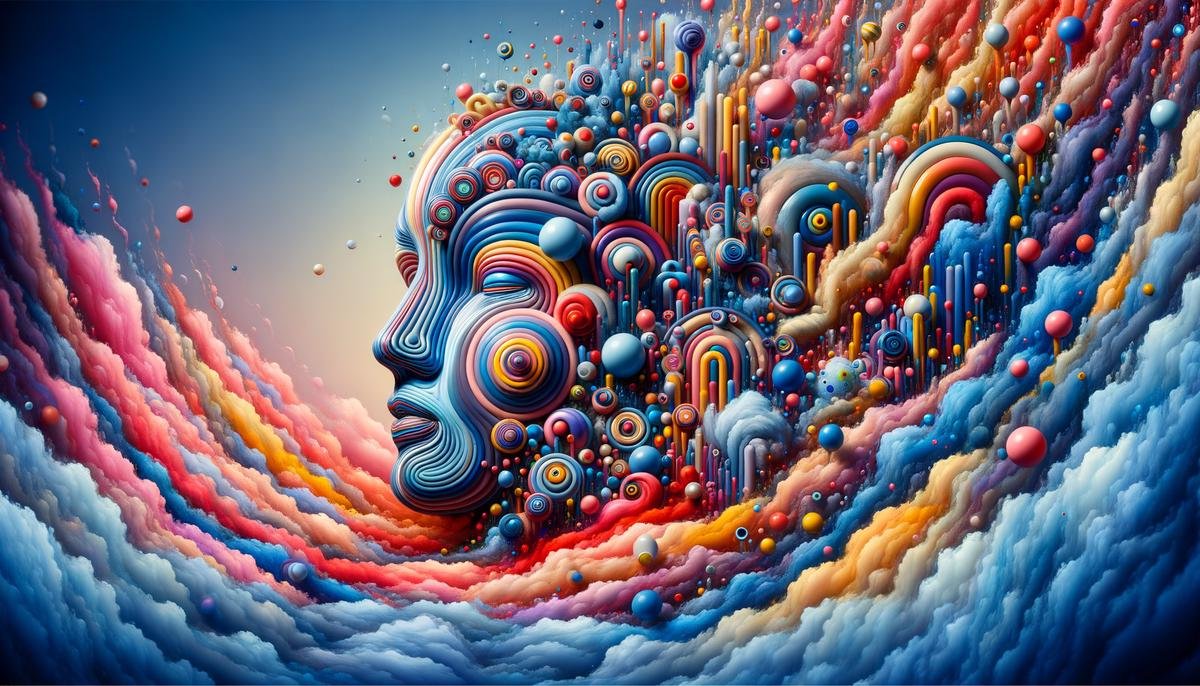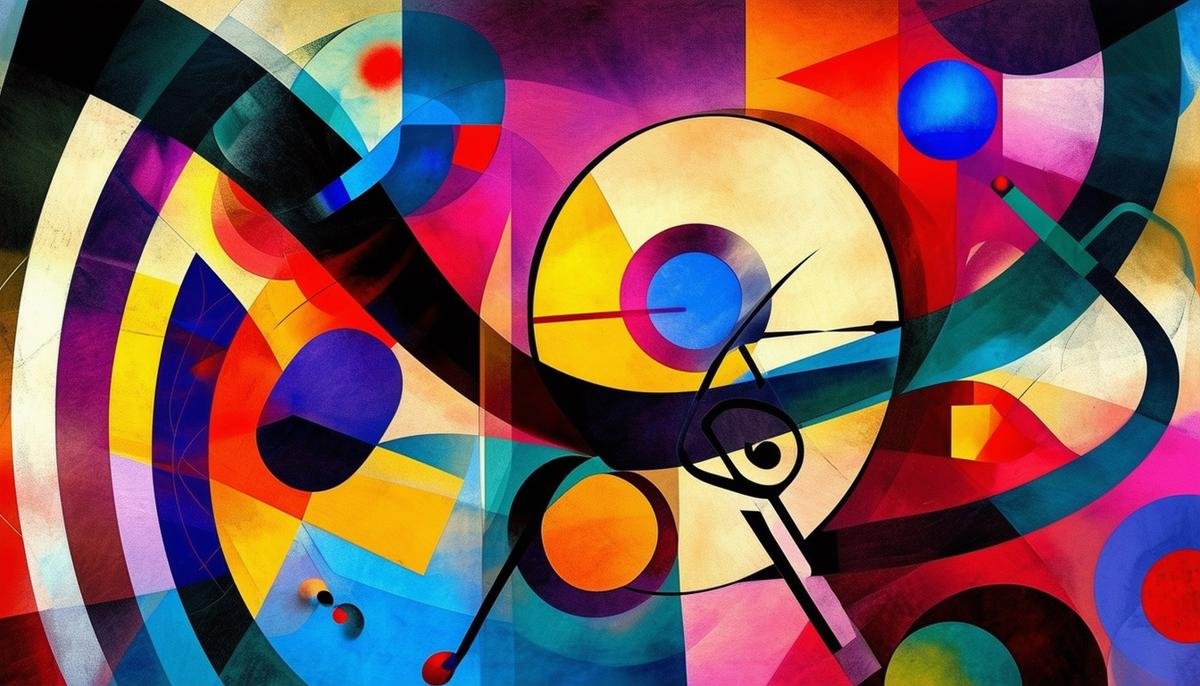Understanding Synesthesia
Synesthesia, a neurological condition where sensory experiences intertwine, presents intriguing prospects for the advertising and branding world. This phenomenon allows some individuals to experience linked perceptions across different sensory modalities, such as visualizing colors upon hearing specific sounds or associating textures with tastes.
Examining the core of synesthesia proves it's more than a quirk of the mind. Someone with this condition might see vivid colors while listening to a piano concerto or taste flavors when seeing certain words. This sensory interplay provides a fertile ground for innovators in marketing.
Brands aim to connect with their audiences on an emotional level. Synesthesia naturally evokes a strong, almost instinctive response, forging deeper emotional linkages. Advertising uses sensory cues to reinforce brand identity and recall. A color might remind you of the crispness of a beverage or a sound designed to evoke the comfort of a car's smooth ride.
The entertainment industry and art have long tapped into synesthetic perceptions, creating experiences that meld sound, sight, taste, and more to produce distinctive atmospheres conducive to deeper engagement. Advertisers can harness similar strategies to stimulate multiple senses simultaneously and enhance consumer engagement.
Imagine packaging that changes color with varying temperatures or jingles that conjure physical textures, embodying the product experience even before purchase. With synesthesia's arsenal, the branding toolbox expands from visual and verbal to kinesthetic and olfactory, not just suggesting but stimulating sensations.
Marketers study these cross-modal connections to craft messages that 'feel' and 'sound' right, leading to coherent and compelling brand experiences. Synesthetic cues could make customers 'taste' the refreshing zap of an energy drink or 'smell' the lush flora of a household cleaner's scent purely through visual and auditory channels.
As synesthetic strategies infiltrate mainstream marketing practices, brands that weave these multi-sensorial threads into their narratives will likely outshine the competition. Audiences increasingly prize unique, memorable encounters, and synesthesia provides the right palette to paint these dynamic experiences.
By tapping into how our brains merge sensations, marketing transcends traditional boundaries. This trend gears up to redefine consumer experiences, illustrating that the future of branding isn't just about watching or listening; it's about feeling on multiple levels simultaneously.

Historical Context and Pioneers
Wassily Kandinsky, a trailblazer in abstract painting, held an intriguing viewpoint that ties into today's evolving marketing strategies. Believed by many to have experienced synesthesia, Kandinsky associated colors with sounds and shapes with specific musical compositions and emotions.1 This cross-sensory experience within his creations laid foundational ideas that are increasingly relevant in modern advertising and branding.
During the early 20th century, Kandinsky's pioneering work transcended traditional visual art forms to invoke auditory sensations. Imagine viewing a canvas and not only appreciating it visually but experiencing a symphony of sounds orchestrating in tandem with the hues and textures presented. Such experiences suggest that traditional sensory boundaries can be blurred to enhance emotional and cognitive engagement—principles significant in contemporary brand strategy.
Kandinsky illustrated how a yellow might evoke the sharp sounds of trumpets or how a deep blue could resonate as the sound of a cello. His concept that different media can provoke the full spectrum of sensory responses emerged across his artworks, enticing viewers to experience more holistic, immersive interactions with art.
In today's brand experiences, Kandinsky's synesthetic perspectives are evolving within current practices. Modern marketers actively experiment with these insights, striving to reach the human senses in a more integrated manner. A visually vibrant ad might be paired with energetic, pulsing music to captivate both sight and hearing, aiming to enhance the overall impact of the message.
Kandinsky's methods of sensory bridging resonate with today's synesthetic branding pursuits. His ideas provoke a deeper consideration into not only the aesthetic of brand elements but their potential to interact across sensory dimensions. Current marketing schemas can transcend solitary modes, engaging interactive experiences that encapsulate the essence and emotion of brands in multi-dimensional, memorable ways.
As branding and advertising continuously adapt, leveraging synesthetic elements encourages innovations that make products and messages not only seen or heard but felt, reflecting a sophisticated blend of art, psychology, and sensory science in creating captivating modern narratives.

Crossmodal Correspondences in Marketing
Marketers exploit crossmodal correspondences to construct a tapestry of sensory stimuli that intensify consumers' perceptions and connections to a brand. The principle revolves around aligning various senses to provoke specific emotional and cognitive reactions; for example, coordinating color schemes and musical elements within an ad to evoke feelings such as excitement or calmness.
Colors are powerful vectors of emotional communication in branding. They do more than merely decorate; they resonate on a psychological level.2 Red, often associated with urgency and vitality, is effectively employed in advertisements aiming to stimulate action. On the other hand, blue conveys reliability and tranquility and is favored by financial institutions to evoke trust and stability. Marrying these colors with specific musical keys or tempos can amplify the desired brand message.
- A faster tempo in a major key might be paired with brighter colors like yellow or orange in an ad for summer beverages, suggesting vitality and joy.
- Conversely, slower, softer musical arrangements in minor keys may accompany cool colors to underline messages meant to soothe and reassure.
Brands have expanded their use of synesthetic principles into multi-sensory experiences to secure stronger consumer engagement and brand loyalty. The rise of multisensory retail spaces, where store designs, ambient scents, and background music are carefully curated, proves pivotal. These elements work in concert to create a branded atmosphere that can enhance the shopper's mood and prolong their visit, increasing the likelihood of purchase.
Digital marketing embraces these synthesized sensory strategies through dynamic video ads where animation, colors, and sounds are expertly synchronized to grab attention and communicate the brand's essence. Consider a tech company releasing a new gadget; sleek visuals with metallic textures combined with futuristic sounds convey innovation and promise excitement.
By fine-tuning the alignment between visual aspects and auditory cues based on established crossmodal correspondences, brands craft richer, more compelling narratives that draw attention and improve recall and brand affinity. This harmonious synchronization of senses goes beyond traditional marketing methods by embedding the brand experience deeply into the consumer's psyche. Through understanding and implementing these sensory synergies, marketers are opening new realms of customer engagement that prove essential in a competitive market landscape.

Case Studies in Synesthetic Marketing
Pandora stands as a compelling example of a brand that has successfully harnessed synesthetic principles to reshape consumer engagement. In their approach to immersive listening experiences, they launched a series of playlists designed to correlate with specific colors. This campaign, which integrated the science of crossmodal correspondences, aimed to enrich the music experience by harmonizing audio sensations with color perceptions.
Pandora curated each playlist to resonate with the psychological and emotional undertones traditionally associated with particular hues. For instance, the 'Red' playlist features songs with dynamic, upbeat tempos and bold sounds influencing feelings of energy and passion. In contrast, the 'Blue' playlist includes tracks that evoke calmness and serenity. This tailored audio-visual alignment exemplifies how brands can invoke a deeper experiential connection, effectively deepening listener engagement and satisfaction.
Another application of synesthetic marketing is demonstrated by a beverage company which introduced temperature-sensitive cans. These cans change color when cooled to the ideal drinking temperature. The visual shift cues a tactile response, priming the consumer for anticipated refreshment and enhancing the overall sensory enjoyment of the product. This integration serves as a novelty to intrigue consumers and functions as a practical tool informing the ideal consumption state.
The fashion industry has also seen its own synesthetic strategy with a luxury brand embarking on a marketing campaign leveraging scent, sight, and sound in their flagship stores. They adopted a unique fragrance dispersed throughout the store, correlating with the textures and colors of their seasonal fashion lines, accompanied by a custom soundtrack that complements both the scent and visuals.3 This holistic sensory engagement immerses customers more completely into the essence of the brand. Studies suggest that such sensory immersion can enhance consumer spending and loyalty by providing an unparalleled shopping experience.
Moreover, some car manufacturers have dived into synesthetic marketing by aligning the haptic feedback in their vehicle interfaces with visual and auditory cues. The way a car button feels and sounds when pressed can be engineered to amplify the sense of quality and precision the brand wishes to communicate. These subtle but powerful sensory signals contribute to an overall perception of luxury and technologically advanced engineering, aligning the customer's multisensory experience with the brand's identity.
From Pandora's playlists to interactive product packaging and immersive retail environments, these examples reveal the growing intricacy of market approaches and reiterate how influential synesthetic principles are in crafting deeply engaging consumer experiences. As brands continue to innovate within this fascinating intersection of sense and perception, the boundaries of what can be received, appreciated, and recalled broaden significantly.
Future Trends in Synesthetic Branding
As we look into the future trends of synesthetic branding, it's evident that the integration of multisensory experiences into consumer interactions will expand, powered by rapid advancements in technology. With technologies like augmented reality (AR), virtual reality (VR), and artificial intelligence (AI), the potential to craft more immersive and personalized consumer experiences appears promising.
Augmented reality and virtual reality present an opportunity to revolutionize synesthetic marketing by creating environments where sensory inputs are controlled and synthesized. AR overlays digital information onto the real world and can introduce sight, sound, and haptic feedback in response to consumer interactions.
- Imagine trying on virtual clothes and experiencing the texture and fabric weight as if they were physically on you.
- Or walking through a digital forest where you can smell the pines and feel the crunch of leaves underfoot.
These immersive experiences could transform traditional shopping and online browsing into rich, engaging events that tap into the consumer's emotional and sensory world.
Artificial intelligence further complicates this multi-sensory fusion by adding a layer of adaptability and personalization. AI can analyze consumer behavior to tailor sensory inputs to individual preferences, potentially predicting a consumer's reaction based on past interactions. An AI-powered platform could adjust the ambient sounds and visual elements of a virtual store to suit a shopper's mood, detected via their biometric data or past shopping behavior, enhancing the buying journey with personalized sensory cues.
Internet of Things (IoT) devices also contribute to this pervasive sensory branding. Objects in the home, like smart mirrors, could use scents and display elements to create synesthetic experiences daily. For example, a smart mirror could analyze your schedule for the day, and visualize data aligning with the weather forecast, your intended activities, or even your mood, proposed through color schemes and olfactory output.
In the realm of entertainment, we expect further blurring of the lines between physical presence and digital immersion. Concerts and live performances might offer 'sensory tickets' that offer on-demand tactility besides visual and auditory streaming, perhaps feeling the bass through haptic feedback on your clothing or chair.
Marketers are poised to design these synesthetic layers as integral components of storytelling in branding rather than mere augmentation or overlays. As branding becomes more entwined with technology, these strategies will grow more sophisticated, utilizing our sensory perceptions to craft messages that resonate deeply and memorably with consumers.
Ethical considerations and consumer desire for authenticity will guide the advancement of synesthetic branding. These technological frontiers must be navigated thoughtfully, balancing innovation with respect for privacy and the impact on consumers. As the discipline advances, so too will regulations that ensure these technologies uplift the consumer experience without manipulating or overwhelming the sensory inputs they depend on to navigate their world.
The trajectory for synesthetic branding illuminates a landscape where every consumer experience is adaptive, anticipatory, and immersive. As every sense is engaged thoughtfully and technology interweaves with everyday life, the boundary between product and experience may disappear. These emerging trends hint at a future not just about what we see or touch, but how fully we can feel a brand – transforming every interaction into a symphony of senses.
In conclusion, the potential of synesthetic branding extends beyond traditional marketing techniques, promising a future where consumer experiences are not just seen or heard but felt across multiple senses. This approach could transform every interaction into a comprehensive sensory event, deeply embedding brand messages in the consumer's memory.
- Van Campen C. The Hidden Sense: Synesthesia in Art and Science. Cambridge, MA: MIT Press; 2010.
- Labrecque LI, Milne GR. Exciting red and competent blue: the importance of color in marketing. J Acad Mark Sci. 2012;40(5):711-727.
- Spence C. Crossmodal correspondences: a tutorial review. Atten Percept Psychophys. 2011;73(4):971-995.



